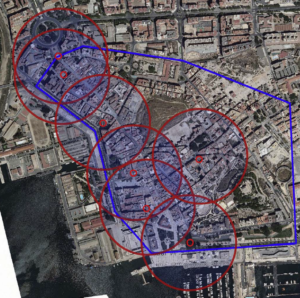Supplying the consumers and businesses in cities is a daily challenge. Among various existing city models, the so-called compact cities presently tend to have more pedestrian zones in cities, which consequently affect surrounding areas; limited parking areas, restricted access for traffic, difficulties to enter with goods, and even access difficulties for the neighbors who live in these areas.
Analyzing urban freight flows
The main objective of a research paper by the universities in Cartagena (Spain) was to analyze urban freight flows by paying special attention to the detailed description of traffic and urban freight flows and to discuss different policies to improve city logistics.
This study focused on the center of the city of Cartagena (Spain), a Mediterranean compact city characterized by having numerous pedestrian zones. The taken measures have are a start for Cartagena to acquire data that allow this city’s urban logistics to be analyzed. These data present traffic flows during different seasons and at various points from which to access the city center.
According to the data measures, more than 3000 pedestrians entered the zone while measurements were being taken; 271 different sized fright vehicles and 456 non-freight motorized vehicles entered the study area. This led to the conclusion that the pedestrian zone is very congested by commuters and freight vehicles in the morning. The analysis provides stakeholders (ex-ante) with data to make decisions about urban logistic processes and to be able to compare these decisions with the former urban goods logistics situation.
Possible actions include more precise access to restricted areas, establish new loading and unloading zones and establishing an Urban Consolidation Center (UCC).

